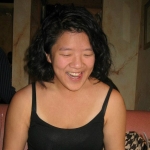No, but where are you REALLY from?
Unlike some of their friends who sent their children to visit relatives almost every summer, my parents did not bring my sister and me to China until after my high school graduation when I was already 17 years old. Born in Michigan, raised in Minnesota and California, I had never previously set foot outside of this country. At the time, what disoriented me about this journey to the East was not so much the crowds, humidity, mosquitos, and urban stenches but simply the fact that I was surrounded by Asians. For the first time, people could look at me and assume that I was part of the majority with no assumptions about who and what I might be or where I was from. Not until I spoke would they realize I was from a foreign land.
Recently, I came across a book titled The Myth of the Model Minority by Rosalind Chou and Joe Feagin, which delves into the often overlooked everyday racism, whether subtle or overt, that faces Asian and Pacific Islander American minorities [1]. Because the median income and educational achievements of this US Census-defined ethnic group tend to be higher than the national average, Asian Americans have often been touted as this country’s “model minority,” the epitome of the American dream of how hard work and perseverance ensure that anyone can achieve perfect grades and lucrative careers as doctors, lawyers, or business entrepreneurs.
You must be really good at math.
The trouble with averages is that they can be very good at hiding our differences. It is relatively easy to identify someone who appears to be of East Asian descent (and especially someone of Han Chinese descent) as Asian American. However, Asia is a rather large continent that has almost 2/3 of the world’s population with languages, religions, foods, clothing, rites, and phenotypes so unique and numerous that they would be difficult to quantify. While those of Chinese origin do comprise the largest of the Asian American groups at 4 million, Filipino and Indian follow closely behind at 3.4 and 3.2 million with Vietnamese, Korean, Japanese, Pakistani, Cambodian, Hmong, and Thai rounding out the top ten [2]. Each of the groups even within this subset differ so vastly that their immigration histories in the US cannot be reflected in one single term, which also glosses over the disparities of income, education, and health experienced by the underrepresented Asian minorities.
The “model minority” designation not only ignores the diversity of the Asian peoples, but it has often been used to create discord between Asian Americans and other minority populations. Chou and Feagin note that the term was first coined by Caucasian Americans who tried argue against the Civil Rights Movement by presenting Japanese Americans in the 1960s as “proof that non-Europeans could succeed in US society and that there were no longer serious racial barriers.” This myth of the model minority was actually seeded a little earlier from an act of blatant racism. Although Japanese Americans had lived in the US for two generations prior to World War II, it was not until after their internment in US concentration camps that “education and job achievement became a major survival response to continuing discrimination,” a strategy that has since been embraced by other Asians who have immigrated to the US in attempts to conform to a new culture and avoid oppression.
The deception of the “model minority” stereotype lies in its presentation as a positive stereotype. Nothing that is a stereotype, however, can truly be positive. There is a subtle but important distinction between what is just a description and what is a stereotype. While both arise from observations of a group based on the features and actions of the individuals in that group, a stereotype implies an expectation that individuals will conform to this restrictive mold of oversimplified ideas.
Is it harder for you to see?
W. E. B. DuBois once poignantly described the “double-consciousness” possessed by people of color in this country: “It is a peculiar sensation, this double-consciousness, this sense of always looking at one’s self through the eyes of others…One ever feels his two-ness…two souls, two thoughts, two unreconciled strivings…” In The Myth of the Model Minority, the authors conducted interviews with Asian Americans of different origins living in different areas of the US, and they would always start by asking whether the interviewee had ever experienced racism in this country. Those who had never experienced a violent display of racism would say no at first, but as the interview progressed, they would discover the subtler racism in everyday situations and the systemic racism that imposes on them an identity of “forever foreigner,” always on the outside regardless of how well they might be assimilated into mainstream culture.
In our country’s history, there have been significant social advances against racism, with Asian Americans greatly benefiting from movements led predominantly by African American communities. However, recent events at the University of Missouri, Claremont McKenna, and Yale (with Ferguson still fresh in our memories) would suggest that we still have a long way to go, even at institutions of higher learning. It is also important to note how global events have affected the treatment of minorities at home: the discriminatory targeting of Asians during World War II, the Korean War, the Vietnam War, and even now with our current ongoing wars. South Asian and Middle Eastern Americans face frequent acts of racism—verbal, physical, subtle, and violent—for no reason other than their appearance.
As medical students and future physicians, most of us are aware of how not to be overtly racist, but it can sometimes be overwhelming to think that we might have to keep track of all of the cultural differences and current events that affect the people who make up our patients, colleagues, friends, and mentors in order to stay “politically correct.” To be more practical (and higher yield), we could learn to better understand how our own perceptions of race, gender, sexuality, and other categorizations arise from a systemic source—the results of how we grew up and where our country’s history has led us—and what it would take to change these perceptions.
- Chou RS and Feagin JR. The Myth of the Model Minority: Asian Americans Facing Racism. Boulder, CO: Paradigm Publishers; 2010.
- Hoeffel EM, Rastogi S, Kim MO, Shahid H. The Asian Population: 2010. 2010 Census Briefs, United States Census Bureau.
Sophie Sun is a medical student at The University of Arizona College of Medicine – Phoenix, class of 2018. She completed her undergraduate degree at UC Berkeley and earned a PhD in chemical biology from The Scripps Research Institute, where she focused on unnatural amino acid incorporation and antibody engineering. Some of her current academic interests include student-run free clinics, vaccine compliance, and accountability in research. However, she might sound more excited when talking to you about classic American cinema, urban compost collection, and French dessert recipes. She is currently pursuing a career as a Med-Peds physician.


